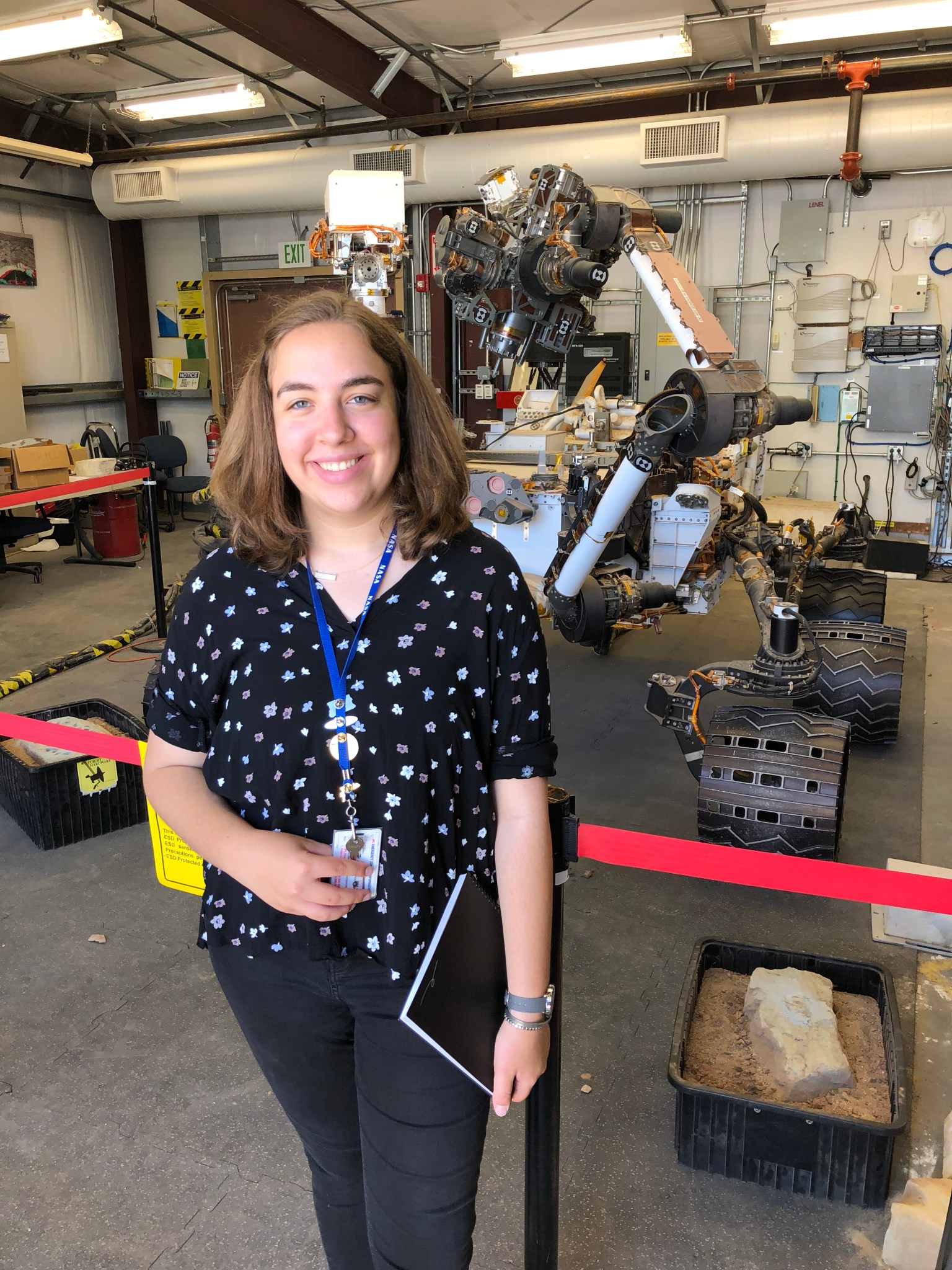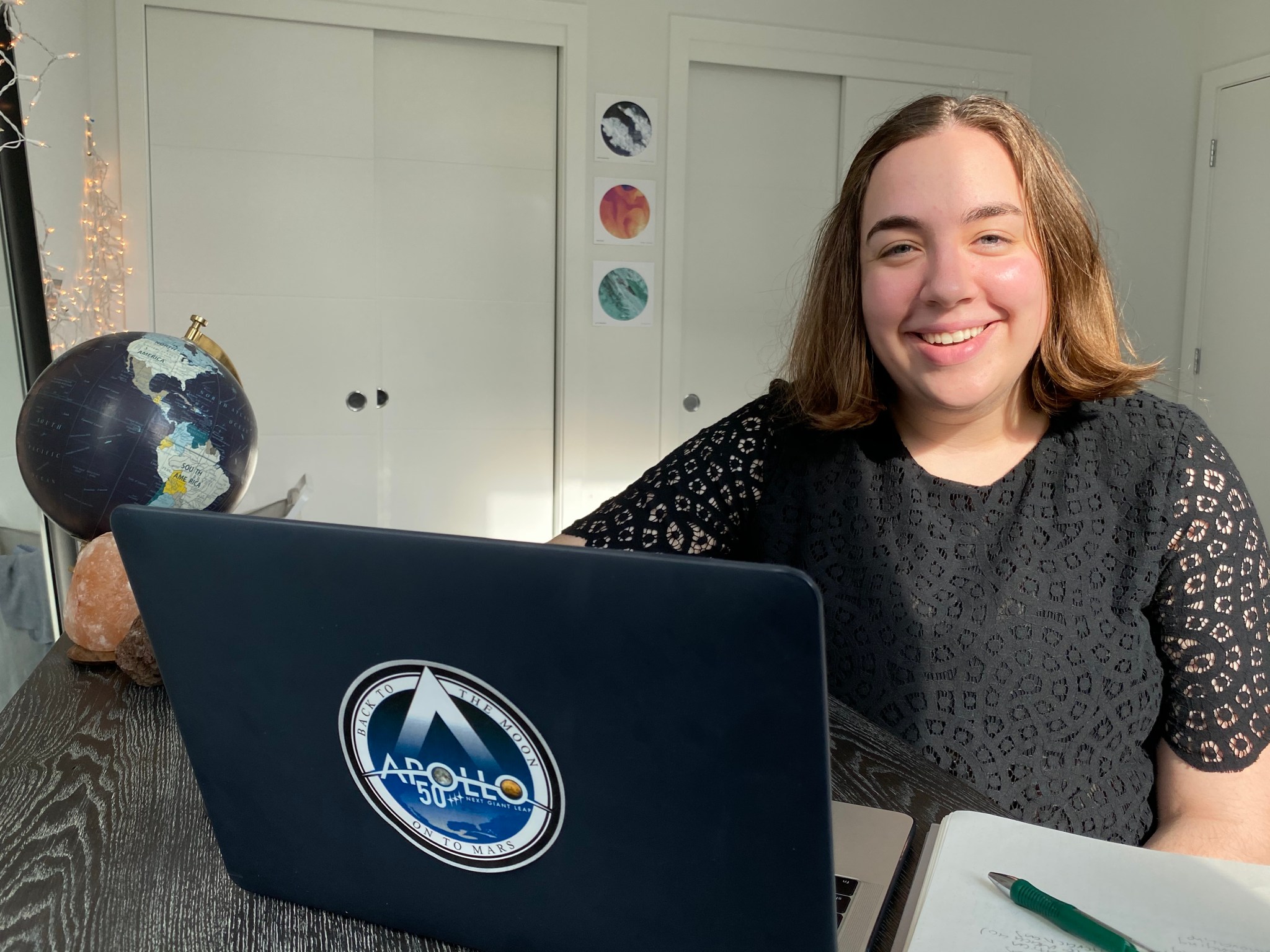Hanna Galimanis dreamt of working to make a crewed mission to Mars possible, and now she’s getting the chance.
This summer, as a virtual intern with NASA’s Jet Propulsion Laboratory in Southern California, Galimanis has been part of the teams preparing for the Mars 2020 Perseverance rover launch – NASA’s next robotic Mars mission, which will help pave the way for humans as early as the 2030s.
Galimanis is no stranger to NASA; she has pursued multiple summer internships at the space agency, while working toward her degree in aerospace engineering at the University of Colorado at Boulder.
“In my experience, an internship with NASA is about learning, contributing, then learning again,” Galimanis said. “That’s why I apply every year.”
In 2018, Galimanis’ first stint with the agency was at JPL, where her project involved ensuring that Cassini mission data remained accessible to the public. The following year, Galimanis interned at NASA Headquarters in Washington with the Space Technology Mission Directorate’s communications team. She drafted talking points and social media posts for technology projects, participated in planning for the agency’s Apollo 50th celebrations, and reviewed lesson plans and supported events as part of STEM education outreach.
This summer at JPL, Galimanis has been working with the engineering operations team that plans and executes tasks that the Mars 2020 spacecraft performs. Her assignment has been to create training videos for tools that the team will use during cruise, entry, descent, and landing, and surface operations.
“The trainings I’m working to build range from tools that are used to document day-to-day status of the spacecraft, to tools that are used to develop the commands that will be sent to the spacecraft on its way to Mars,” Galimanis explained. “All of these tools are new to me, so first I spend some time learning how it works and then I script, film, and edit the videos, with help from my mentor and our team.”
Through all of her internships, Galimanis learned about cutting-edge NASA technology and how innovations in space can help improve life on Earth, too.
“I hope that people watching this launch are inspired by the idea that a rover seeking signs of ancient life on Mars is named after the same trait that we are striving to exemplify here on Earth: Perseverance,” she said.
Galimanis remembers learning about the historic Apollo missions in school. Now, as a NASA intern, she is excited to be a part of the Artemis generation and its new era of exploration to the Moon and then, on to Mars.
“To me, the legacy of Apollo is not the boot prints or lunar samples, but rather the unshakeable instinct to continue exploring,” Galimanis said. “Being a part of the Artemis generation means living up to the promises of the Apollo generation. Not necessarily the promise of flying cars, but rather creating a better world through the exploration of space.”
To learn more about interning at NASA and to view current opportunities, visit






























